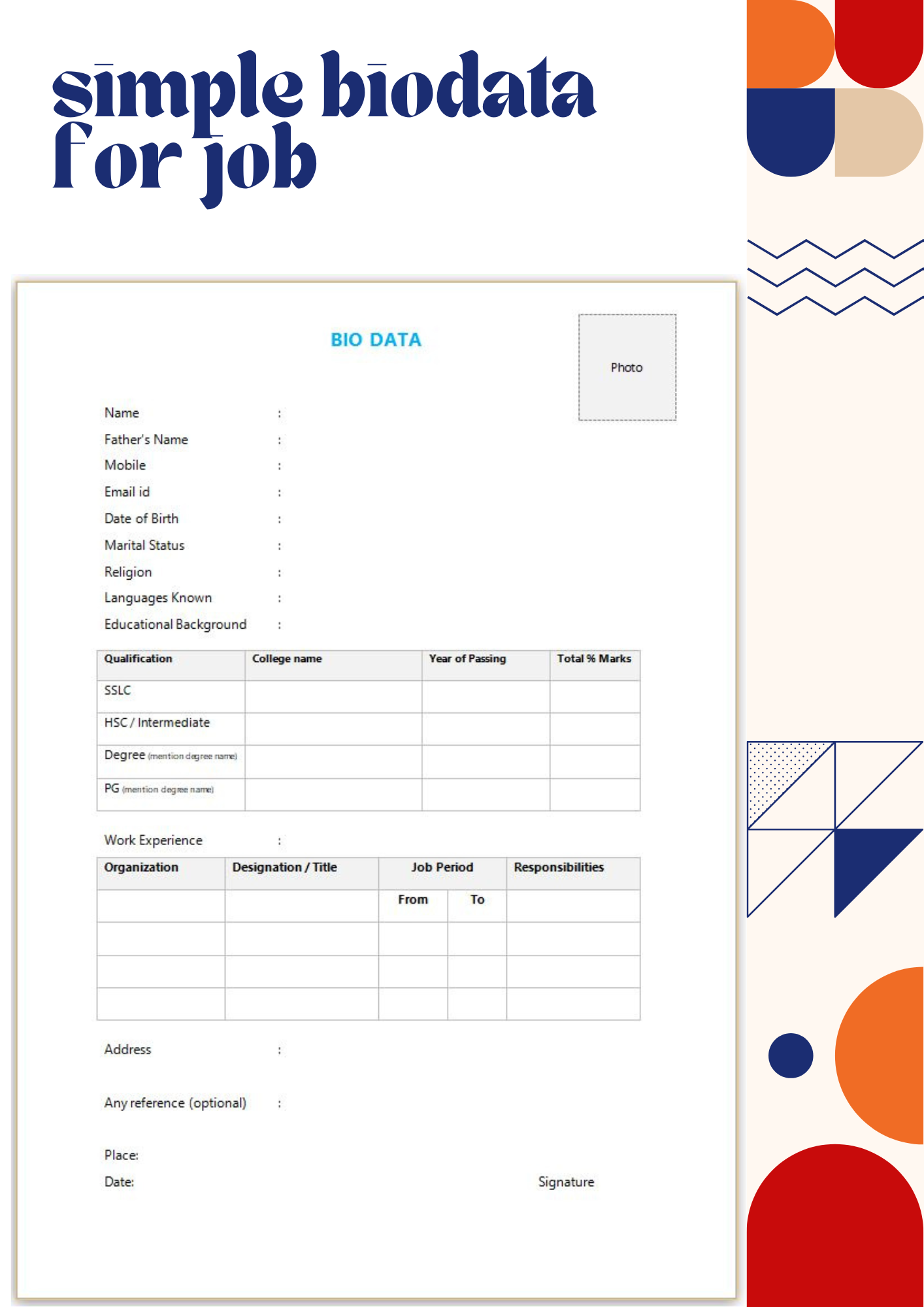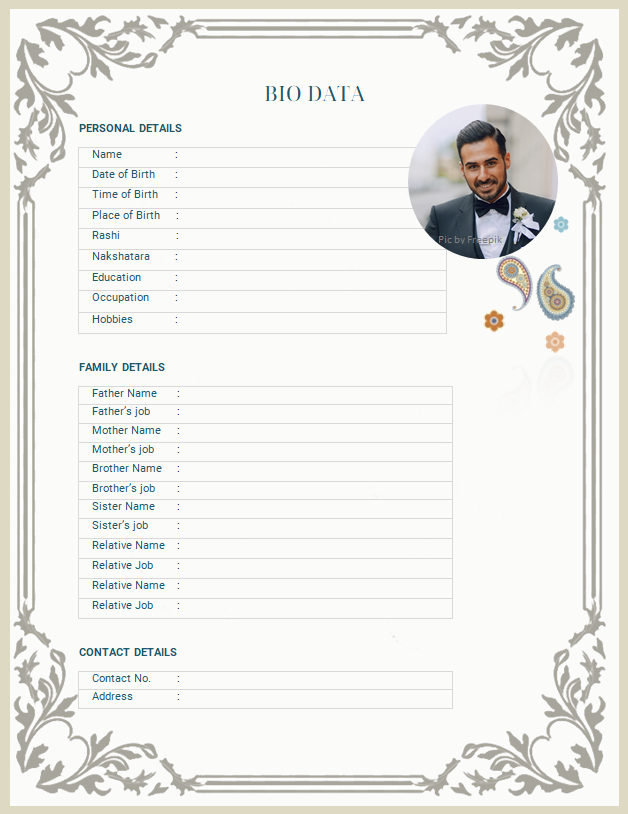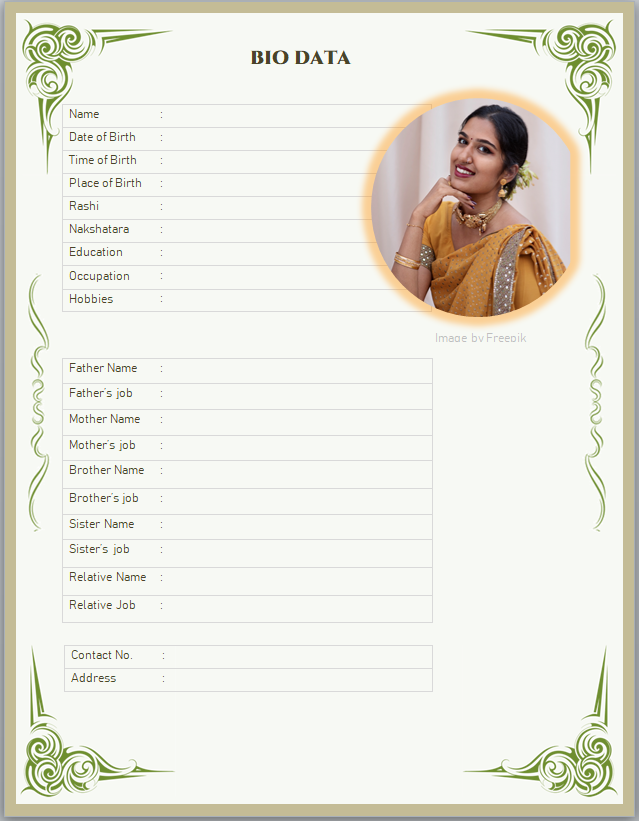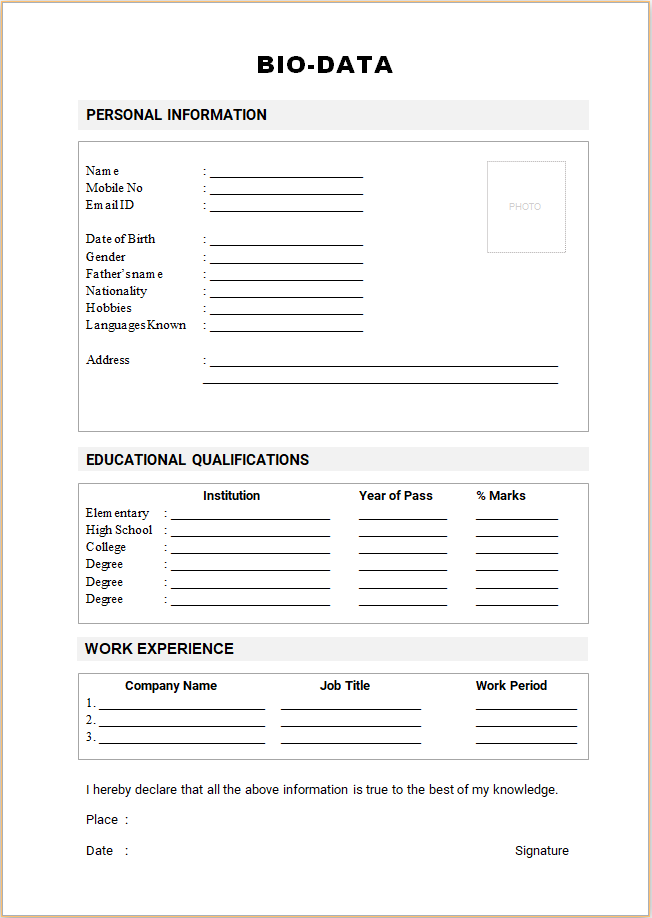Simple Biodata format for job
MS Word Biodata format for job

Biodata format
Creating your first biodata as a fresh graduate is an important step in presenting yourself to potential employers. Here are some tips to help you create an effective biodata:
Contact Information:
Include your full name, phone number, email address, and LinkedIn profile (if applicable).
Ensure that your email address is professional.
Objective or Career Summary:
Write a concise and compelling objective or career summary that highlights your career goals and what you bring to the table.
Educational Background:
List your educational qualifications in reverse chronological order.
Include the name of the institution, degree earned, major, graduation date, and any honors or awards.
Skills:
Highlight relevant skills you possess. This can include both technical and soft skills.
Tailor your skills to match the requirements of the job you're applying for.
Work Experience (if any):
Include any internships, part-time jobs, or relevant volunteer experiences.
Use action verbs to describe your responsibilities and achievements in each role.
Quantify your achievements where possible (e.g., "increased sales by 20%").
Projects and Achievements:
Showcase any notable projects, academic achievements, or extracurricular activities.
Emphasize how these experiences have equipped you with valuable skills.
Certifications and Training:
Include any relevant certifications or additional training you have completed.
Languages (if applicable):
Mention any additional languages you are proficient in.
Personal Information:
Optionally, include a brief section about your interests and hobbies.
Be cautious about sharing too much personal information.
Formatting:
Keep the layout clean, organized, and easy to read.
Use a professional font and maintain a consistent formatting style.
Length:
Aim for a one-page biodata, especially as a fresh graduate. Be concise and focus on the most relevant information.
Tailor for Each Application:
Customize your biodata for each job application by emphasizing the skills and experiences most relevant to the position.
Proofread:
Check for grammatical errors and typos. A well-proofread biodata reflects attention to detail.
References:
Unless specifically requested, you can omit references from your biodata. Instead, state that references are available upon request.
Don't forget that your biodata is often the first impression employers have of you, so make sure it effectively communicates your qualifications and enthusiasm for the job. Adjust and update it as your experience grows.
Additional Inputs
Creating a biodata for your first job application can be a learning process, and it's essential to be aware of common mistakes to avoid. Here are some pitfalls to watch out for:
Including Irrelevant Information:
Keep your biodata focused on relevant information for the job. Avoid including personal details or experiences that don't contribute to your professional profile.
Excessive Length:
As a fresh graduate, your biodata should ideally be one page. Avoid including unnecessary details that can make it excessively long and tedious to read.
Using an Unprofessional Email Address:
Ensure that your email address is professional. Avoid using nicknames or inappropriate words in your email address.
Generic Objectives:
Avoid using generic or vague career objectives. Tailor your objective to the specific job you're applying for, expressing your enthusiasm and suitability for that role.
Lack of Action Verbs:
Use strong action verbs to describe your experiences and accomplishments. Avoid passive language, as it can make your achievements sound less impactful.
Grammatical Errors and Typos:
Proofread your biodata thoroughly to eliminate grammatical errors and typos. Mistakes can create a negative impression and suggest a lack of attention to detail.
Inconsistent Formatting:
Maintain a consistent and professional formatting style throughout your biodata. Inconsistent fonts, spacing, or formatting can make your document appear unpolished.
Overemphasis on Responsibilities Instead of Achievements:
While describing your work experience, focus on your achievements rather than just listing responsibilities. Quantify your achievements when possible to demonstrate your impact.
Including References:
Generally, references are provided upon request and don't need to be included in your biodata unless explicitly asked. Save space for more relevant information.
Unprofessional Fonts and Colors:
Stick to professional fonts and avoid using bright or unconventional colors. Opt for a clean and readable format.
Overstating or Exaggerating:
Be honest and truthful about your skills and experiences. Overstating or exaggerating your qualifications can lead to problems during interviews or on the job.
Ignoring Keywords:
Tailor your biodata to include relevant keywords from the job description. This can increase the chances of your biodata getting noticed by applicant tracking systems (ATS).
Generic Language:
Avoid using generic language or clichés. Instead, use specific and concrete examples to showcase your skills and experiences.
Neglecting Social Media Presence:
In today's digital age, employers may check your social media profiles. Ensure that your online presence is professional and aligns with the image you present in your biodata.
By being mindful of these common mistakes, you can create a more effective and professional biodata that enhances your chances of securing interviews and job opportunities.


